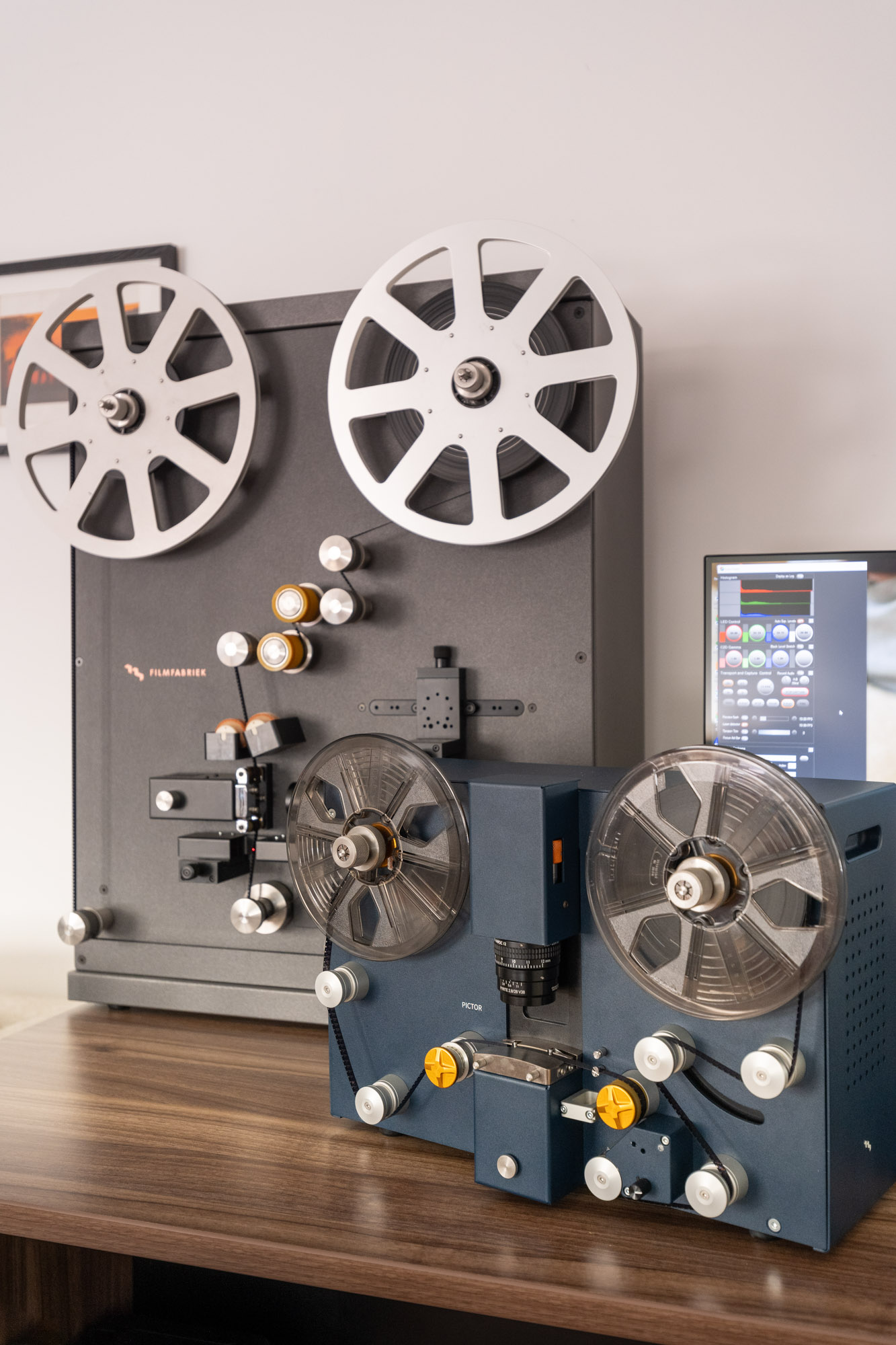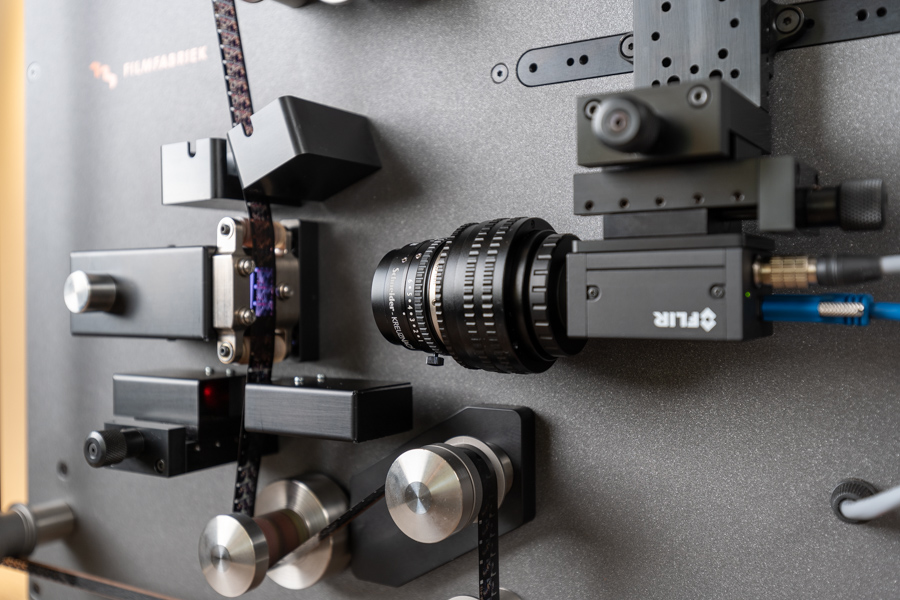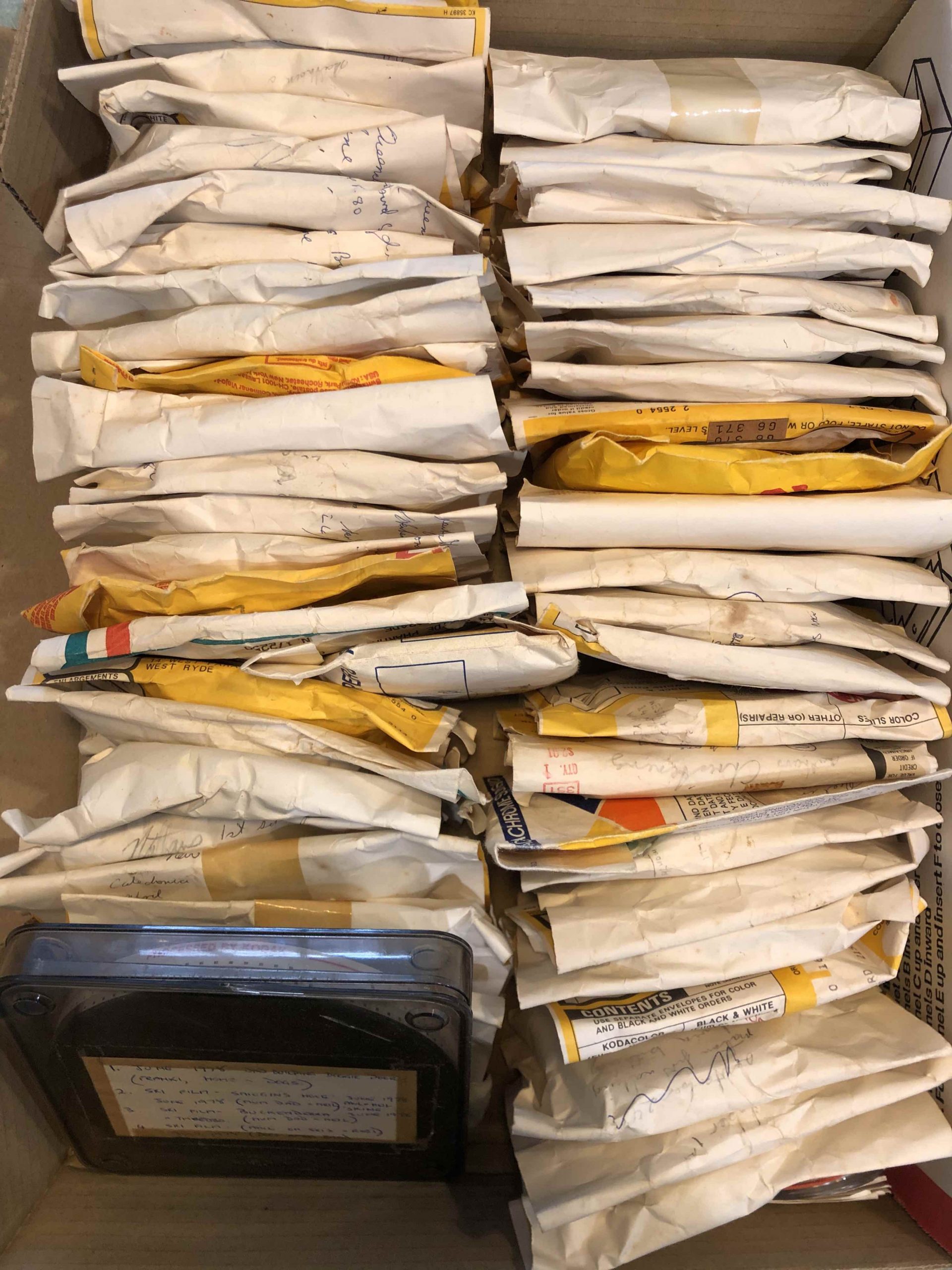With our care, experience and access to leading technology in 2023, we can digitise 8mm, 9.5mm and 16mm film to a level of quality that wasn’t possible even 8 years ago.
Our turnaround times are around 1 week
With our care, experience and access to leading technology in 2023, we can digitise 8mm, 9.5mm and 16mm film to a level of quality that wasn’t possible even 8 years ago.
Our turnaround times are around 1 week
“I can't recommend the company too highly. Andrew did a terrific job of cleaning up and digitising some very old films (both B&W and colour). It was a relief finding someone professional, knowledgeable and friendly too. The turnaround time was short as well.”
Ann See
After many times running through a projector, the film collects a lot of dust and grime. It’s important to clean the film carefully to remove this excess dirt before scanning, otherwise the dirt will be very visible in the footage transferred. Software can help, but not as well as physically removing most of it first.
A scanner transports film from one reel to another, photographing each frame on the film as it passes. Our scanner is a leading model that has a smooth transport system, accurate frame registration, high quality camera, and a good light source to illuminate the film. Although just as a good camera requires a good photographer to make the most of it, the same goes for a scanner. We use the FilmFabriek HDS+ Scanner. It’s a $55k scanner – a serious investment for a quality product. Most other businesses will use a cheaper moviestuff scanner that costs $15k and doesn’t produce as good results.
The film scan is saved as an uncompressed .AVI 8 bit video, or a 10bit DPX sequence.
It’s transcoded to Apple ProRes 422 HQ for a master preservation file, and for editing. There’s a huge amount of room to adjust exposure and make colour adjustments for fade and incorrect filter setting.
Most other businesses can only produce a compressed video, with very limited range to make corrections. They aren’t saving all the range of the film
We make adjustments with the editing software Davinci Resolve, which allows professional adjustments of the overall look of the film. Most scans will require the exposure (brightness) to be adjusted, and some will need colour fade to be corrected. Some film is very blue, and some has faded to magenta which can be corrected to an acceptable degree. After all necessary adjustments, we will export it as a .mp4 file, or an Apple ProRes file if you’d prefer.
Our pricing is currently discounted until June 2025! Please reach out for a quote to digitise your film collection. For an example of our pricing, please see the costs for 8mm film below.
We’ll beat other quotes too, either in price, quality or both.
We offer free shipping to return your orders, and can also lend you a tracker to enclose in the package you send us.
Our base option is still higher quality than others!
Larger reels are charged per ft of film.
We do discount based on reel sizes and quantity. Please reach out with your reel sizes and quantity for a quote.
All sound film can be digitised, striped super 8, standard 8, 16mm is captured directly on the film scanner, not ran through an out of time projector like others use.
This is an extreme case of scratched film. The scratches are caused from projecting the film. Normally if the film or projector was dirty at the time, as it runs through it creates very obvious vertical scratches.
Wetgate film scanning is the process of coating the film in a suitable solvent which fills the scratches and cracks, making them appear almost invisible to the scanners camera. The solvent evaporates immediately before the film is rewound on the take up reel. The results speak for themselves! it’s a huge improvement over any software available that claims to reduce scratching, and not every scanner can do this, it has to be hardware fitted to the machine.
We have two scanners, both manufactured by FilmFabriek – A dutch company specialising in producing film scanners that create very high quality images.
We have the Pictor, a small 8mm only scanner that can scan up to 1080p, capture sound directly on the scanner, and has a wetgate fitted for scratch restoration. We also have the HDS+, that can scan 8, 9.5 and 16mm film in resolutions up to 4K. It’s also fitted with sound capture directly on the scanner, and a wetgate for scratch reduction.
So we can scan 8mm (Regular 8, Super 8), 9.5mm Pathe, and 16mm film.
We primarily use the HDS+, it will scan at 4K resolution 4096 x 3000, which is 4x higher resolution that other competitors 1920 x 1080p Full HD “Top of the line, Broadcast quality” offerings.
The most phenomenal feature of the scanners is the light source and software. It evaluates each frame, and adjusts the individual red, green, and blue LEDs separately to get the best dynamic range from the camera. It also strobes the light at a very high intensity, so even very dark underexposed film can be scanned without adding extra camera gain and noise. Other competitors scanners have a single white LED with a very low output – around 30w power. This requires extra camera gain to be applied for even normally exposed film. Our scanner can produce 600w of light to really light up dark film!
There’s no claw mechanism to push the film along like a projector. the camera is triggered to take a photo as the hole in the film passes by a laser sensor, or on the Pictor, it’s triggered by a free rotating wheel + software identifying the sprocket hole
Considering the scanners have sound heads, audio can be captured on the scanner! There’s no need to run it through a rough and abrasive projector to capture the sound track (which is what others have to do)
There are only two other places in Australia that operate a scanner of this level for home movie transfers.
The scanner is also fitted with a wetgate, which reduces visible scratches and cracks by 90%
I know, every website says it… “The best quality available, top of the line, Frame by frame, broadcast quality”
Well, maybe it was top of the line in the 2000’s when their website was written, But technology has grown to offer much higher quality cameras. If the website isn’t showing off their scanner, it’s likely a DIY projetor modification, or an outdated moviestuff 720p scanner from 10 years ago.
Always ensure you know what the company you choose to scan your precious film with is using. It makes all the difference! We’re very confident in our scanner and the output we provide customers, and are happy to show you everything about it!





Please note, the words frame by frame do not accurately represent the quality that a company will output. It did, in the 90's, but now almost all machines are frame by frame, but some are terrible quality.
There are huge variations in quality from various businesses offering digitisation. It's very important not to base your decision on who to trust with digitising your film just on price.
We are not the cheapest, but our results are so much better than others, and well worth the investment.
Others can afford to charge a very small fee because their workflow may be as simple as loading the customers film straight in a projector with a video camera mounted on the front, and pressing play.
We put care, time and love into digitising families films. Scanning film and working with the files takes a long time! if a business is cheap for scanning, you can't expect them to be putting in the same amount of time and care.
There are so many businesses offering "film to DVD", "super 8 to usb", and it can be overwhelming to choose someone. You need to judge on quality, not only cost. Send a sample reel in to test! We're happy to put our product up to the test
We also scan 8mm and 16mm negative film. There are still a couple places here in Australia where you can have your film developed.
For Super 8 shooters, Contact Nanolab in VIC
For 16mm Shooters, Contact Neglab in NSW.
You can choose to have your film delivered straight to us from the lab for a super fast turnaround scan.
There are plenty of option for overscan or filling the frame.